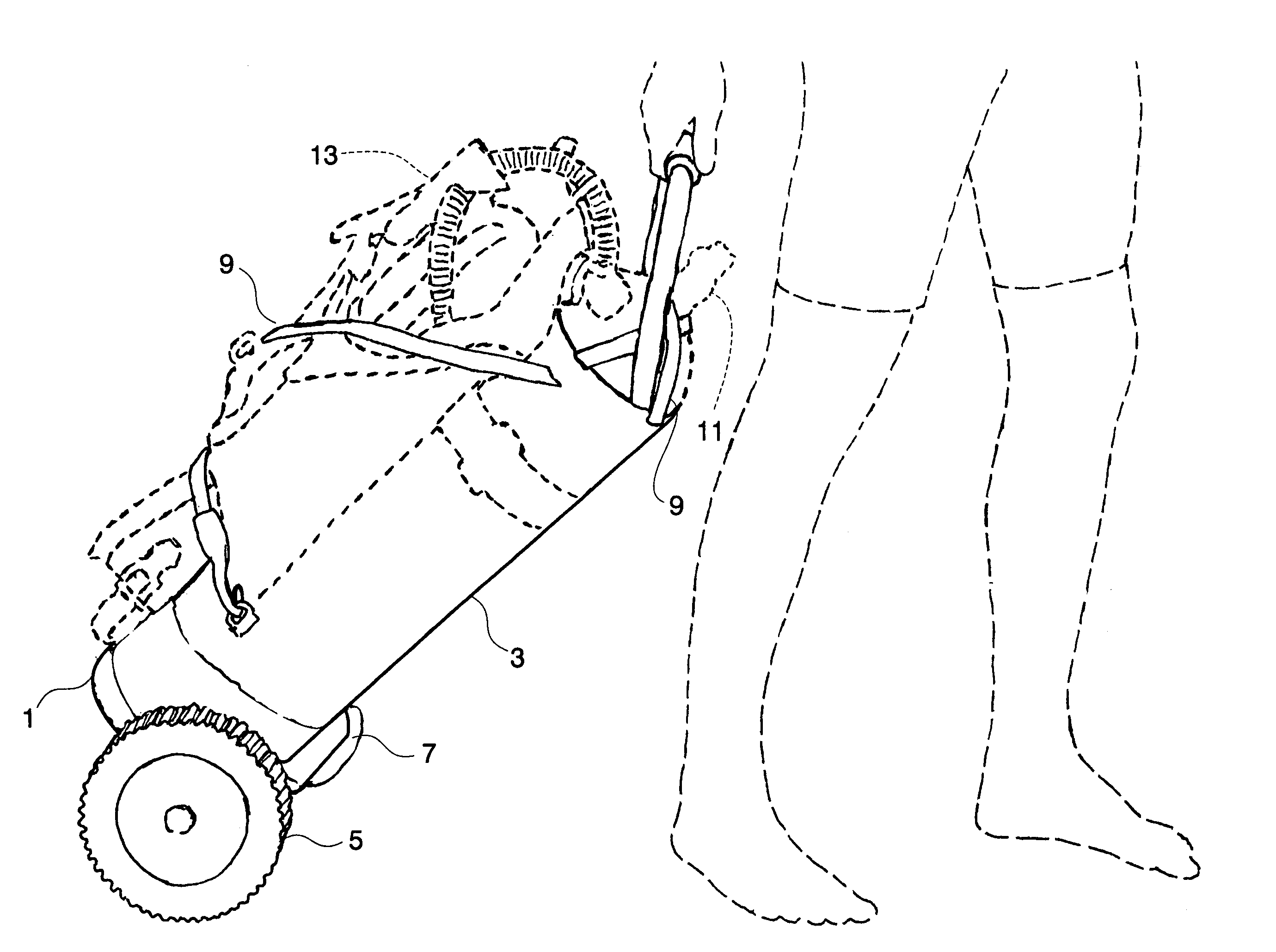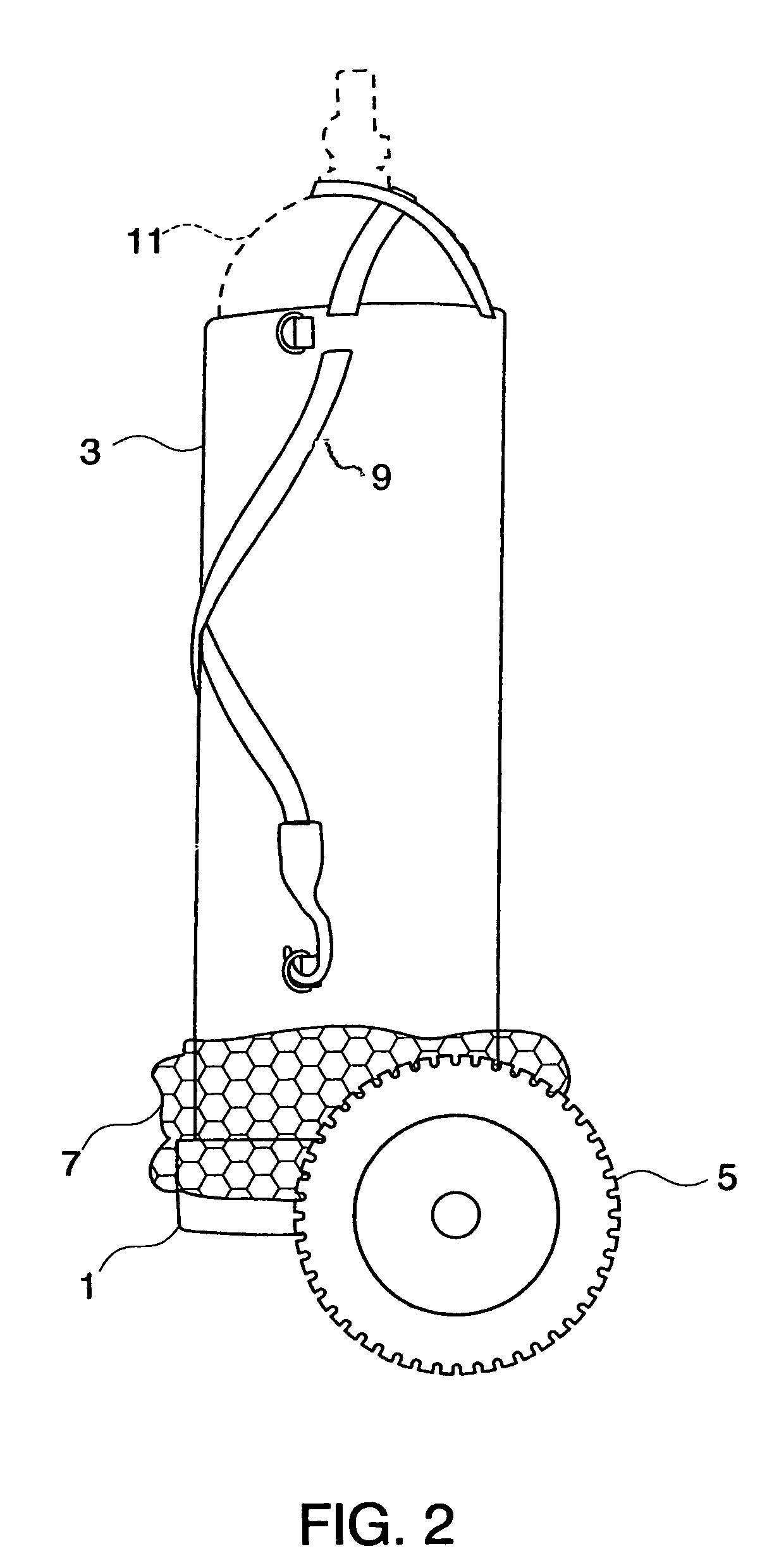Amphibious, submersible, streamlined transport device for scuba gear
a technology for transporting devices and scuba gear, which is applied in the direction of transportation and packaging, underwater equipment, hoisting equipment, etc., can solve the problems of airtanks and divers not being able to reach the sea, heat stroke risk, and unconsidered problems, and achieve the effect of avoiding heat stroke and avoiding heat strok
- Summary
- Abstract
- Description
- Claims
- Application Information
AI Technical Summary
Benefits of technology
Problems solved by technology
Method used
Image
Examples
Embodiment Construction
[0036]Referring in detail to the drawings, in which identical parts are identically marked, the invention comprises a device for use in making beach-entry scuba dives by assisting the diver to transport scuba tanks and other diving gear across a beach or like land area and into the water, and then taking the device along with her during the dive, for ready access and use upon exiting the water.
[0037]Basically, the main parts of invention comprise a base; a flexible, form-fitting sleeve that can encompass at least one scuba airtank on its inside attached to said base; a pair of removable and re-attachable wheels that when attached to the base in a rolling position create, for the combination of said base, said flexible, form-fitting sleeve and said attached removable and re-attachable wheels, a top and bottom side and a lifting and towing end to that combination; at least one fastenable pocket on the external side of said flexible, form-fitting sleeve, into which said pair of removab...
PUM
 Login to View More
Login to View More Abstract
Description
Claims
Application Information
 Login to View More
Login to View More - R&D
- Intellectual Property
- Life Sciences
- Materials
- Tech Scout
- Unparalleled Data Quality
- Higher Quality Content
- 60% Fewer Hallucinations
Browse by: Latest US Patents, China's latest patents, Technical Efficacy Thesaurus, Application Domain, Technology Topic, Popular Technical Reports.
© 2025 PatSnap. All rights reserved.Legal|Privacy policy|Modern Slavery Act Transparency Statement|Sitemap|About US| Contact US: help@patsnap.com



